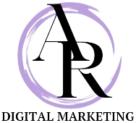Businesses primarily use traditional and digital marketing methods to advertise their goods and services. Traditional marketing depends on offline strategies like newspaper and TV ads, etc. Whereas Digital marketing utilizes social media and other internet techniques Both digital and traditional marketing have advantages and disadvantages. For example, traditional marketing reaches a large audience, but it might be difficult to evaluate its effectiveness. On the other hand, Digital marketing is cheaper and helps companies to monitor the impact of their ads, but it’s harder to reach people who aren’t online.

Here’s how traditional and digital marketing is different in many ways:
1. Reach and Targeting between Traditional and Digital marketing:
Traditional Marketing:
Traditional methods show the brand message to lots of potential customers every day, helping them remember and recognize the brand better. These marketing methods reach a wider audience without focusing on a single category. For example, a billboard on a highway or a TV commercial. Showing advertisements during peak hours reaches a large number of people, but they may not be customized for specific demographics.
Digital marketing:
Online platforms help in specific targeting. Marketers can target certain demographics, interests, and behaviours. For example, social media ads can aim at people by their age, gender, hobbies, and more, making campaigns really personalized. Digital marketing platforms collect large volumes of user data, which helps in building strategies. Marketers may personalize content and messaging to individual tastes and behaviours. This is carried out by combining data analysis and user behaviour tracking. This helps to increase the impact of digital marketing campaigns.
2. Cost and ROI between Traditional and Digital marketing:
Traditional Marketing:
Traditional marketing strategies, such as billboards, newspaper ads, and TV ads, frequently require higher production and placement costs. Because of their broad reach and visibility, these mediums can be expensive. Also, it’s hard to figure out if they’re worth the money spent. To figure out how well old methods like traditional marketing affect sales or brand recognition, we need to do a lot of analysis and collect a bunch of data. Because of this, companies might find it hard to understand how their marketing spend is working. Despite these limitations, many businesses continue to use traditional marketing strategies to reach a large audience.
Digital marketing:
3. Measurability and Analytics between Traditional and Digital marketing:
Traditional Marketing:
Traditional marketing methods don’t have detailed analytics. It’s hard to measure how well campaigns work with traditional marketing. Metrics like surveys and viewing ratings aren’t always accurate. It is tough to see the impact of campaigns. As a result, companies have trouble identifying the exact effect of their marketing techniques. Without accurate analytics, it is hard to improve strategies and make decisions based on data. Even though there are limitations, companies still use traditional marketing because it has a good reputation and reaches a lot of people.
Digital marketing:
4. Engagement and Interaction between Traditional and Digital Marketing:
Traditional Marketing:
Digital marketing:
Digital platforms enable interactive communication through features like comments, shares, likes, and messages on social media platforms, blogs, and web pages. Brands can quickly address customer concerns, answer questions, and form direct communication. Digital platforms are different from traditional marketing because they let you engage with customers instantly and build strong connections with them. Interactive communication lets brands get helpful feedback, make customers happier, and build stronger loyalty to the brand. Online marketing’s main advantage is its real-time engagement, which lets businesses have dynamic and personalized interactions with their audience instantly.
5. Flexibility and Adaptability between Traditional and Digital Marketing:
Traditional Marketing:
It is difficult and costly to make adjustments to traditional campaigns once they have already launched. Since print and billboard advertisements are fixed in place, making changes once they are published is difficult and costly. Making changes to traditional methods can require a lot of resources. Also, traditional ads can’t change easily, so it’s harder to keep up with what audiences want or changes in the market. Companies stick to traditional marketing because it sometimes works well and reaches a lot of people, even though it’s hard to use.
Digital marketing:
Digital campaigns let marketers quickly change things and improve strategies in real time. Marketers can improve their strategies by changing ads, target audiences, or content based on real-time data, which helps them be more flexible and effective. Because campaigns are easily customizable, marketers can quickly adjust to changes in audience habits and market trends. This flexibility helps marketers adjust plans easily, which makes campaigns more successful and increases ROI.
